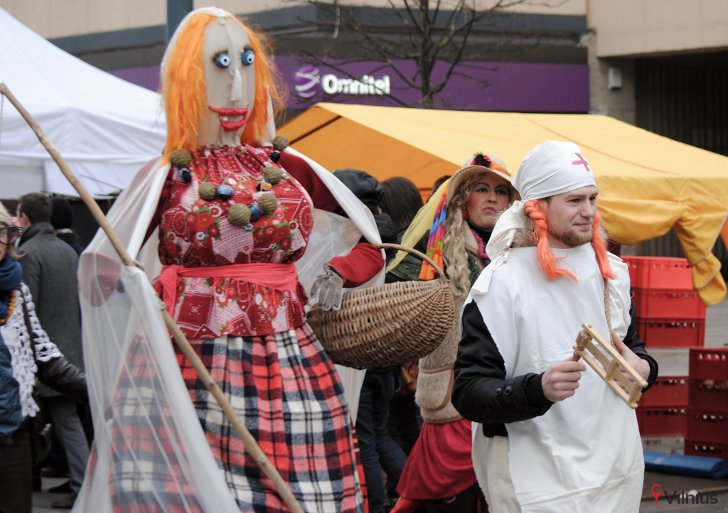Lithuanian Fat Tuesday is similar to Nordic Fastelavn or Russian Maslenitsa. It is the last day before Lent so people indulge themselves in eating rich, greasy foods that are forbidden during Lent. Traditional dishes served at the Užgavėnės festival are pancakes (blynai) with different toppings and Lithuanian-style doughnuts called spurgos. Spurgos are filled with jam and coated with sugar, they don’t have a hole.
Shrove Tuesday celebrations in Lithuania include many customs that date bask to the pre-Christian era and are pagan in nature. One of them is the burning of Morė. More is an effigy representing winter. Its burning is a major element of the festival, meant to symbolize the defeat of winter and the beginning of spring. Similar rituals can be found in many countries.
Another essential element of Užgavėnės is a mock battle between two traditional characters, Lašininis and Kanapinis. Lašininis personifies winter and Kanapinis is the symbol of spring. Although they are of similar strength, Kanapinis always defeats Lašininis just like spring always overcomes winter.
A lot of people participating in the festivities dress up in carnival costumes. In Lithuania, you won’t see elaborate Caribbean-style outfits. Carnival costumes here are much simpler, they represent traditional characters such as witches, devils, gypsies, goats, grim reapers.
In Lithuania’s capital Vilnius, the celebration is held in the main street of the city, Gediminas Avenue. It involves dancing, masquerading, games, and many other activities for revelers of all ages. Another major celebration takes place at the open-air ethnographic museum in Rumšiškės.

Photo: iVilnius - Vilniaus miesto gidas




